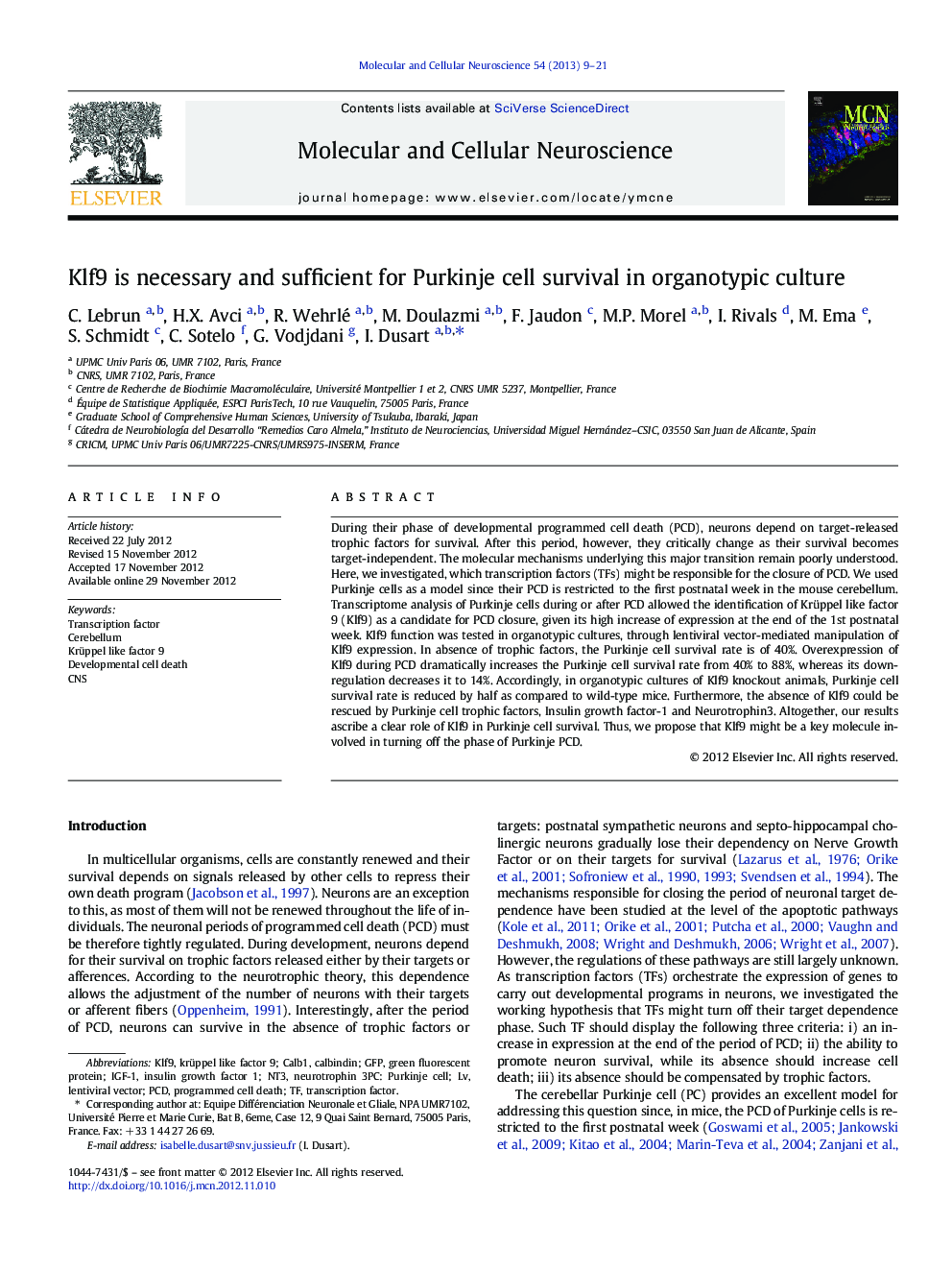| Article ID | Journal | Published Year | Pages | File Type |
|---|---|---|---|---|
| 2198538 | Molecular and Cellular Neuroscience | 2013 | 13 Pages |
During their phase of developmental programmed cell death (PCD), neurons depend on target-released trophic factors for survival. After this period, however, they critically change as their survival becomes target-independent. The molecular mechanisms underlying this major transition remain poorly understood. Here, we investigated, which transcription factors (TFs) might be responsible for the closure of PCD. We used Purkinje cells as a model since their PCD is restricted to the first postnatal week in the mouse cerebellum. Transcriptome analysis of Purkinje cells during or after PCD allowed the identification of Krüppel like factor 9 (Klf9) as a candidate for PCD closure, given its high increase of expression at the end of the 1st postnatal week. Klf9 function was tested in organotypic cultures, through lentiviral vector-mediated manipulation of Klf9 expression. In absence of trophic factors, the Purkinje cell survival rate is of 40%. Overexpression of Klf9 during PCD dramatically increases the Purkinje cell survival rate from 40% to 88%, whereas its down-regulation decreases it to 14%. Accordingly, in organotypic cultures of Klf9 knockout animals, Purkinje cell survival rate is reduced by half as compared to wild-type mice. Furthermore, the absence of Klf9 could be rescued by Purkinje cell trophic factors, Insulin growth factor-1 and Neurotrophin3. Altogether, our results ascribe a clear role of Klf9 in Purkinje cell survival. Thus, we propose that Klf9 might be a key molecule involved in turning off the phase of Purkinje PCD.
